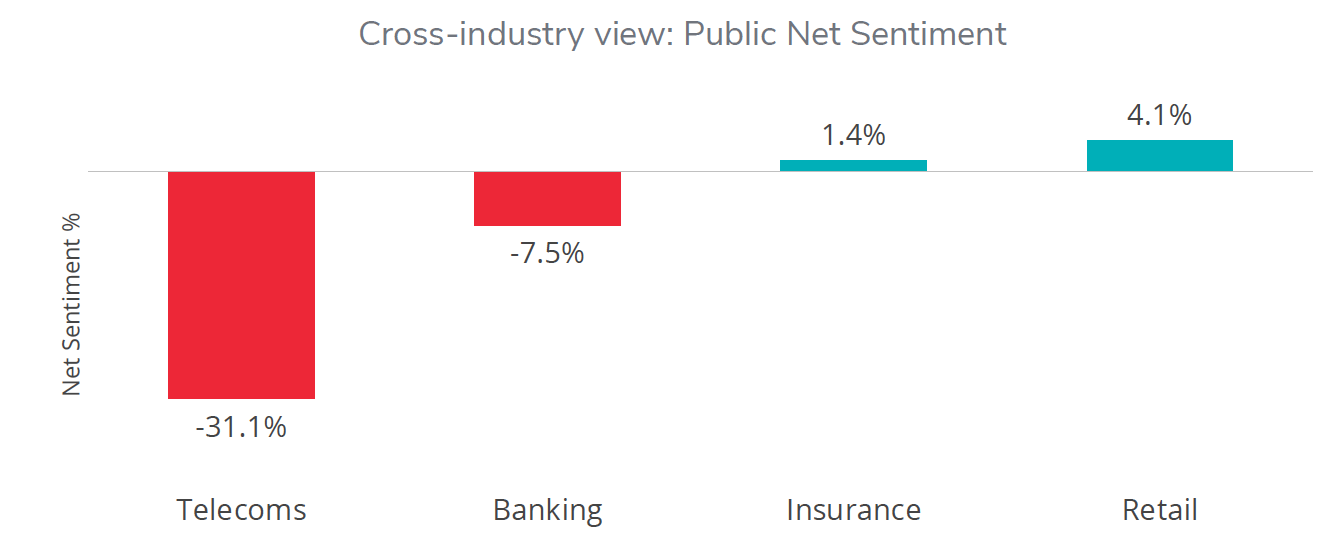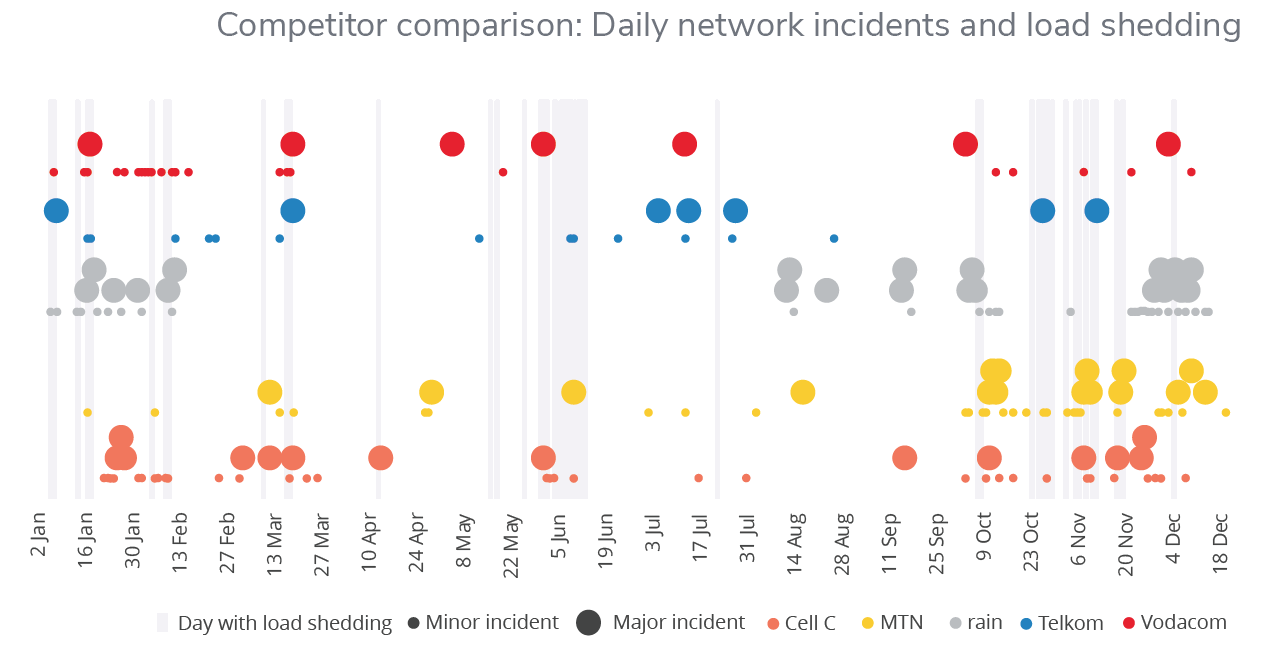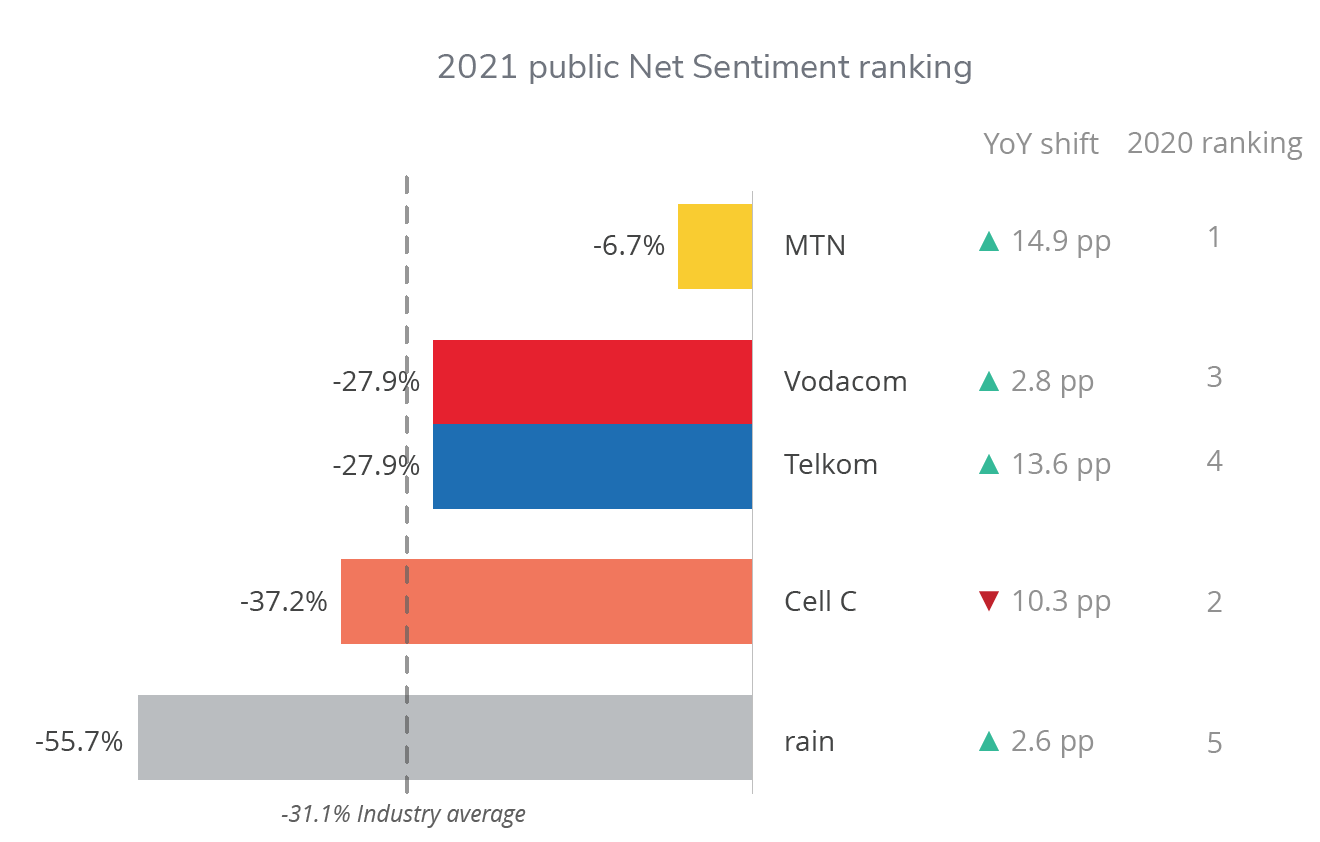South African telecoms service providers continue to suffer from unfavourable perceptions from consumers. This is despite the sector working towards augmenting its network capacity with additional fibre and wireless deployments in 2021, with load shedding one of the major setbacks.
This is according to the latest South African Telecommunications Sentiment Index, conducted by DataEQ (formerly BrandsEye) in partnership with Deloitte Africa, which reveals the industry ranked last in terms of consumer sentiment for the second consecutive year, when compared to the banking, insurance, and food retail industries.
The Index was conducted by tracking over 1.8 million social media mentions online which mentioned Cell C, MTN, rain, Telkom and Vodacom between 1 January and 31 December 2021.

Gill Hofmeyr, Africa TMT Industry Leader at Deloitte, notes that while conditions have been trying across most sectors in recent years, telecom operators have had a particularly tough run. “Amid increasing data traffic, telcos have battled for additional broadband spectrum. Load shedding has also had a devastating impact on the industry, pushing operational costs up at a time when margins were already under immense pressure.”
Load shedding compounded network stress across the industry
Data provided by EskomSePush confirms that load shedding was implemented on a total of 45 days in 2021. According to the Index, over half of these days also saw unusual volumes of network complaints from at least telco, evidencing the negative impact of load shedding.

Most telcos see annual Net Sentiment improvement
In this year’s Index, MTN extended its lead by producing the largest year-on-year Net Sentiment improvement, while rain’s uptick was not enough to see a ranking shift. The biggest improvement in both reputational and operational sentiment came from Telkom, which saw the partly state-owned telco climb the rankings to share second place with Vodacom.

Bucking the trend, Cell C was the only provider whose Net Sentiment worsened in 2021, which saw the telco slide down one spot in the ranking. Net Sentiment is calculated by subtracting the total volume of negative sentiment from positive sentiment, providing an aggregated real-time view of consumer opinion.
Telcos’ reputational efforts masked poor customer service
Of the improved sentiment from 2020 to 2021, DataEQ CEO, Nic Ray, notes that much of the progress relied on telcos’ reputational efforts. “Notwithstanding some successful brand and influencer campaigns, customer experience remained a major shortcoming across the industry, with consumer sentiment for this aspect worsening year on year.
“Considering that telcos’ efforts in 2021 did not translate into an improved customer experience when compared to 2020, this remains a key potential area for differentiation in the next few months or years,” adds Ray.
As network providers continue to delve deeper into financial services, this year’s index also includes a dedicated analysis of telcos’ adherence to the Financial Sector Conduct Authority’s (FSCA) Treating Customers Fairly (TCF) regulatory framework with regards to their financial services offerings. Poor response to customer conversation in this regard therefore not only impacts a brand reputationally but could pose a market conduct risk as well.
“Beyond these rising regulatory pressures, the results indicate that telcos lag the broader financial services sector in terms of consumer sentiment. It will be important for telcos to seek to close these gaps through improved customer service if they are to grow their financial services businesses,” Hofmeyr concludes.




